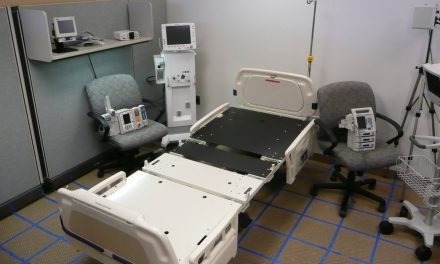Under a trial funded by a $3.1 million grant from the NIH, Brigham and Women's Hospital is using 10 waist packs (that sounds so much better than "fanny packs" doesn't it?) that patients will wear containing sensors, transmitters, and
tracking gear. The packs will allow medical staff to constantly monitor
patients' heart rates and blood-oxygen levels while they await
treatment. From the description, there is no arrhythmia analysis provided, a major shortcoming. The project is called SMART for Scalable Medical Alert and Response Technology.
The technology deployed includes a 3 lead ECG and a finger sensor connected to a PDA that transmits the signals to a server that provides surveillance. The real time positioning system (RTLS) uses ultrasound from Sonitor Technologies, rather then traditional RFID or infrared technology. There was no description on the fanny pack used.
This story has gotten pretty good press, but is far from ground breaking. From what's been reported, you could even say that Brigham and Women's has recreated commercial products with their $3.1 million grant. Wireless patient worn monitors are currently available off the shelf; the most advanced are the Micropaq (3 or 5 lead ECG, heart rate, SpO2) and the Propaq LT (non-invasive blood pressure, respiration, 3 or 5 lead ECG, heart rate, SpO2) from Welch Allyn. Both of these monitors are ruggedized and water resistant, and I'll bet they will fit Brigham and Women's fanny packs.
Wireless patient worn monitors are great, which is why vendors make them. What's really needed is nurse-carried alarm notification. Putting patient waveforms on a central station that nurses may glance at as they rush by has limited value. Greater value is gained by sitting a monitor tech in front of the display (they use paramedics at Brigham and Women's), but that comes at a cost - and more than a little uneasiness from the caregivers who depend on them for alarms. A really ground breaking project would integrate alarm notification with patient location; if you included support across vendors and different devices you would reach nirvana.
The RTLS portion of this system highlights that fact that each of the different RFID/RTLS technologies has inherent strengths and weaknesses - there is no one "best" positioning technology for all applications. Brigham and Women's chose ultrasound for one reason: walls. When a patient alarms, caregivers need to know where to find ambulatory patients. (Of course, location should be communicated via a nurse-carried device as well.) Because ultrasound does not penetrate walls, you always know what room or hallway - or which side of a wall - the patient is in. This room-accuracy comes at a price; ultrasound receivers must be placed in each room and hallway where patients are to be tracked. The leading RTLS vendor in the room-accurate market segment is VERSUS - they are the vendor of choice for nurse call system vendors who offer an RTLS option. It would be interesting to know if VERSUS was considered by Brigham and Women's and why they went with Sonitor. Pictured right is the Sonitor ultrasonic tag.
It seems that the hype about 802.11-based RFID is subsiding, and folks like Brigham and Women's are selecting technology based on a thorough needs assessment.
I'd love to hear from anyone who can comment on this deployment - I'm sure there's much that never made it into the stories.



http://www.rfidjournal.com/article/articleview/3931/1/1/
Did the Sonitor trial not pay off? Seems like a lot of grant money to test 10 packs and then discontinue use in favor of a wholly separate technology.